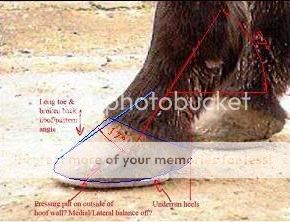serena2005
Well-Known Member
So the vet came yesterday, he said hes lame on both front legs, more sensitive on the insides of his soles so he gave him an injection in his heals to numb them.
hes going to have his feet x-rayed next thursday and to be shod by the farrier then, hes going to have bar shoes (??) something like that.
vet insisted his problems had nothing to do with the farrier,which i still dont agree with but hey. i have spoken to my farrier who is happy to shoe him again

down side is he probably wont be sound for at least 2 months, if at all. so if thats the case owner said she will get him as sound as she can then sell him, not sure who would buy him as a lame horse, but there you go!!
so hopefully ( iv heard myself saying this before) we are back on the road to recovery again!!!
thanks for all your support and advice

hes going to have his feet x-rayed next thursday and to be shod by the farrier then, hes going to have bar shoes (??) something like that.
vet insisted his problems had nothing to do with the farrier,which i still dont agree with but hey. i have spoken to my farrier who is happy to shoe him again

down side is he probably wont be sound for at least 2 months, if at all. so if thats the case owner said she will get him as sound as she can then sell him, not sure who would buy him as a lame horse, but there you go!!
so hopefully ( iv heard myself saying this before) we are back on the road to recovery again!!!
thanks for all your support and advice









